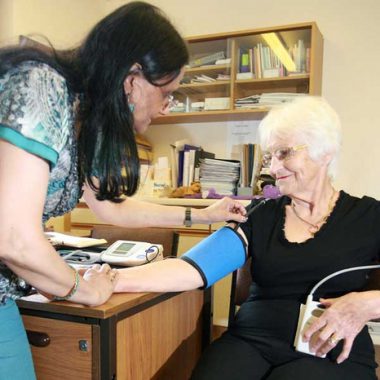Risk tool could help GPs pick up thousands more with hypertension

GPs could identify thousands of missed cases of hypertension with the help of a simple blood pressure risk tool, researchers have reported.
The tool – the Predicting Out-of-Office Blood Pressure (PROOF-BP) risk algorithm – is used to help GPs decide if someone with relatively normal clinic blood pressure readings might still be at risk of hypertension and should undergo further testing with ambulatory blood pressure monitoring (ABPM).
Although this would mean carrying out extra investigations, the tool also helps rule out unnecessary testing in people with raised blood pressure only when they are in the clinic – so-called ‘white coat’ hypertension.
Currently NICE guidelines recommend carrying out ABPM in people with a raised clinic blood pressure of 140/90 mmHg to confirm a diagnosis of hypertension.
However, this excludes around 10-15% of people with ‘masked hypertension’ whose blood pressure is normal in the clinic but raised on ABPM, researchers said. On the other hand, it also means people with raised clinic pressures but normal blood pressure the rest of the time – ‘white-coat’ hypertension – are put through costly ABPM unnecessarily.
The team, led by Mark Monahan from the University of Birmingham, used computer modelling to assess use of PROOF-BP – which uses three clinic blood pressure readings along with height and weight – to help guide ABPM.
They estimated that using PROOF-BP to guide ABPM would pick up 14,623 additional cases of hypertension for every 100,000 people with clinic blood pressures of 130/80 mmHg or above.
At the same time, it would cut out some 18,578 unnecessary ABPM investigations, compared with the current NICE approach.
Overall, the team calculated it would be a cost-effective alternative, at the usual NICE cost-effectiveness threshold of £20,000 per additional quality of life year gained.
The researchers concluded that the algorithm ‘appears to be cost-effective compared to the conventional blood pressure diagnostic options in primary care and would lead to reduced death and disability’.
The study was reported at the recent Society for Academic Primary Care annual conference.
Pulse October survey
Take our July 2025 survey to potentially win £1.000 worth of tokens

Visit Pulse Reference for details on 140 symptoms, including easily searchable symptoms and categories, offering you a free platform to check symptoms and receive potential diagnoses during consultations.









